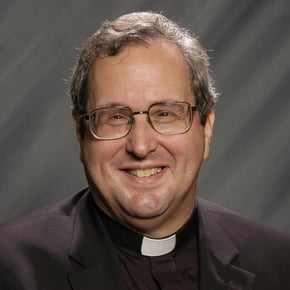Explore the profound history, theological significance, and early practices surrounding the belief in Jesus' real presence in the Eucharist.
Jesus' Intentions at the Last Supper
One of the most significant moments in Christian theology is the Last Supper, where Jesus gathered with His disciples before His crucifixion. During this meal, Jesus took bread, broke it, and shared it with His disciples, saying, "This is my body." Similarly, He took a cup of wine and shared it, saying, "This is my blood of the covenant, which is poured out for many."
Jesus' words and actions at the Last Supper were not merely symbolic. He intended the bread and wine to become His real body and blood. This act was meant to establish a new covenant, offering salvation through His sacrifice. By commanding His disciples to "Do this in remembrance of me," Jesus ensured that this sacred ritual would be perpetuated through history, bringing His real presence into the lives of believers.
The Meaning and Process of Transubstantiation
Transubstantiation is the term used to describe the transformation that occurs during the Eucharist. According to this doctrine, the bread and wine used in the sacrament become the actual body and blood of Jesus Christ, even though they retain the appearance of bread and wine.
Theologians in the Middle Ages, particularly St. Thomas Aquinas, thoroughly developed the concept of transubstantiation. He explained that while the bread and wine's "accidents" or physical appearances remain unchanged, their "substance" is transformed into the body and blood of Christ. This change occurs through the power of God and is mediated by the priest's words of consecration during the Mass.
This belief underscores the profound mystery of the Eucharist. It is not simply a symbolic act but a real participation in the sacrifice of Jesus, offering believers a tangible connection to His divine presence.
The Eucharist as Seen by the Early Church
From the earliest days of Christianity, the Eucharistic celebration has been central to the faith. The early Church viewed the Eucharist as a real communion with Jesus Christ, making His presence tangible and accessible to believers.
In the first century, the Eucharist was often celebrated within the context of a communal meal. However, the reenactment of Jesus' words of institution always held a special significance. As the practice evolved, the communal meal was separated from the Eucharistic celebration, emphasizing the sacrificial nature of the ritual.
The Didache, an early Christian document from the first century, highlights the importance of the Eucharist. It describes the Eucharistic prayers and identifies the celebration as a sacrifice. To ensure the purity of the ritual, participants are required to confess their sins.
Historical Evidence Supporting the Real Presence
Historical evidence from early Christian writings and practices supports the belief in Jesus's real presence in the Eucharist. St. Paul's writings, for example, emphasize the sacrificial nature of the Eucharist. In his first letter to the Corinthians, he describes it as participation in the body and blood of Christ.
Early Christian writers, such as St. Ignatius of Antioch and St. Justin Martyr, also affirmed the real presence. They described the Eucharist as the "flesh of our Savior Jesus Christ" and emphasized its importance in the life of the Church.
These early testimonies highlight the continuity of belief in the real presence from the time of the apostles through the early centuries of Christianity. They provide a strong foundation for understanding the significance of the Eucharist in the life of the Church.
The Theological Implications of the Real Presence
The doctrine of the real presence has profound theological implications. It underscores the belief that Jesus is truly present in the Eucharist, offering Himself to believers in a tangible way. This presence is not merely symbolic but a real and substantial encounter with the divine.
The real presence also emphasizes the sacrificial nature of the Eucharist. By participating in the Eucharist, believers are united with the sacrifice of Jesus on the cross, receiving the grace and salvation He offers.
This sacrificial dimension highlights the depth of God's love and the transformative power of the Eucharist.
Furthermore, the real presence fosters a sense of unity among believers. As members of the Body of Christ, they are brought into communion with one another through their shared participation in the Eucharist. This unity strengthens the Church and reinforces the bond between its members.
Modern Perspectives on the Real Presence in the Eucharist
In contemporary Christianity, the belief in the real presence continues to be a central tenet of faith. The Catholic Church, along with many other Christian denominations, upholds the doctrine of transubstantiation, affirming that Jesus is truly present in the Eucharist.
However, the broader Christian community has diverse perspectives. Some Protestant denominations view the Eucharist as a symbolic act rather than a literal transformation. Despite these differences, the Eucharist remains a significant and sacred practice for Christians worldwide.
Modern theological discussions continue to explore the mystery of the real presence, seeking to deepen understanding and appreciation of this profound sacrament. Through ongoing reflection and dialogue, the Church continues to affirm the Eucharist's importance in believers' spiritual lives.
In conclusion, the belief in the real presence of Jesus in the Eucharist is rooted in the teachings of Jesus, the practices of the early Church, and the theological developments of the Middle Ages. It remains a central and transformative aspect of Christian faith, offering believers a profound encounter with the divine and a tangible connection to the sacrifice of Jesus.
To read Fr. Spitzer's full article, click on the text below.

